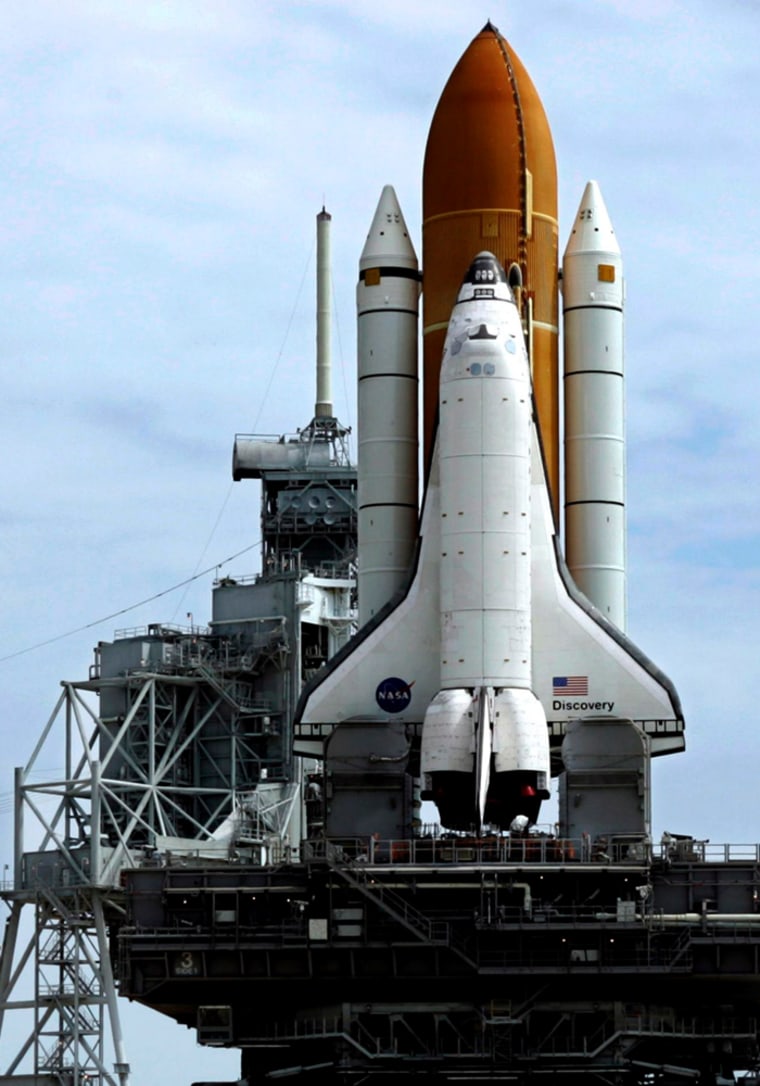NASA's planned launch of the space shuttle Discovery this month has slipped a few more days to Feb. 22 due to extra time needed to finish tests related to newly installed valves on the spacecraft, agency officials said Friday.
Discovery was slated to launch no earlier than Feb. 19 pending the completion of tests to ensure the shuttle's three fuel flow control valves are safe to fly. But work at several NASA centers to evaluate the valves in time for a Tuesday meeting by shuttle managers is taking longer than planned, and shifted the launch to no earlier than Feb. 22, according to an update released late Friday.
Mission managers are now expected to discuss the valve test results on Feb. 13, and then meet again on Feb. 18 to review the Feb. 22 launch target, said NASA spokesperson Kyle Herring at the agency's Johnson Space Center in Houston. That process, however, is wholly dependent on the progress and results of the valve tests, he added.
Earlier this week, NASA delayed Discovery's initial Feb. 12 launch date by at least a week due to concerns with the spacecraft's flow control valves.
There are three flow control valves on Discovery — one for each main engine — designed to route gaseous hydrogen from the engines to a propellant tank in the orbiter's external tank to maintain proper pressurization during the launch into space.
During NASA's last space shuttle launch in November, one of the valves aboard the Endeavour orbiter was damaged, sending a small chip about the size of a thumbnail tip into the plumbing lines leading back to the external tank. Endeavour successfully reached orbit and maintained fuel tank pressure despite the glitch. Engineers found a crack in the suspect valve after Endeavour returned to Earth.
An initial analysis suggests that acoustic vibrations may have led to high-cycle fatigue of a valve component that pops up and down like a lawn sprinkler head, NASA's space shuttle program manager John Shannon told reporters late Tuesday. Similar valves aboard Discovery were replaced with ones that have flown previously and are known to be in good shape, he added.
Even so, mission managers ordered a round of tests to better understand how metallic chips from the valves could affect plumbing lines leading back into Discovery's fuel tank during flight.
"We want to make sure we've got this right," said NASA's space operations chief Bill Gerstenmaier late Tuesday. "So we think standing down a little bit of time, and letting the folks do a little more work is a good thing."
Commanded by veteran spaceflyer Lee Archambault, Discovery's STS-119 mission is NASA's first of up to six shuttle flights scheduled for 2009. The two-week mission includes four spacewalks to deliver the last set of U.S.-built solar arrays to the International Space Station and replace a member of the orbiting laboratory's Expedition 18 crew.
A series of additional space station construction flights, as well the final shuttle mission to overhaul the Hubble Space Telescope, are also slated to launch this year.
